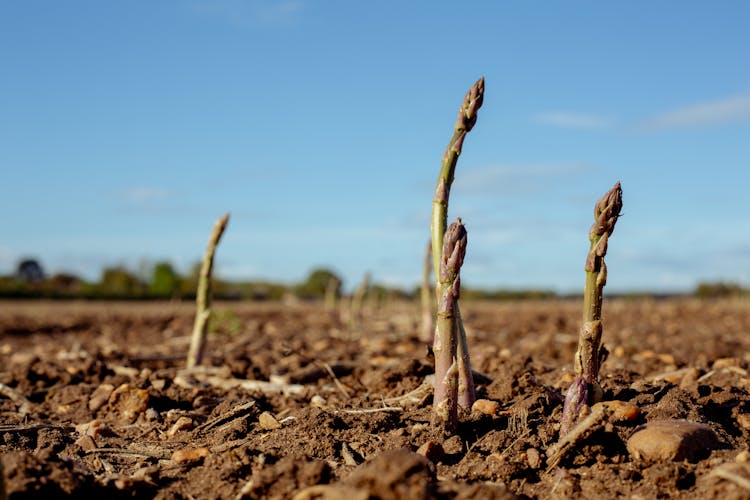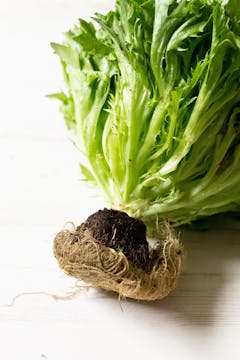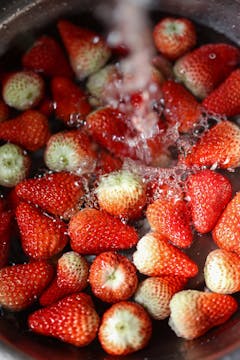What Is GMO?
What does GMO mean and how can it impact our bodies and the environment?

If there’s one term that’s been floating around the fruit and veg world for a good old while now, it’s GMO. Let’s take a deep dive into this much-discussed - and often misunderstood - issue to uncover exactly what GMO foods are and if we should or shouldn’t be including them in our diet.
What is GMO?
At its roots, GMO stands for Genetically Modified Organism. It can refer to a whole bunch of things - from plants and insects to even large animals like cows.
When it comes to GMO foods that are plant-based, these have usually been genetically adapted by scientists in a lab. They do this by transferring desirable genes from one plant into another, ultimately creating a brand-new - and supposedly superior - version. Sometimes these modifications make crops more resistant to things like pests or the weather. Other times, they might give the plants additional nutrients.
Sound like a good idea on the face of it? Sadly, genetic modification isn’t all sunshine and roses. While most scientists agree that GMO foods are generally safe to eat, there’s a small amount of evidence that shows they can trigger allergic reactions and even potentially lower antibiotic resistance…
When did GMO foods start being distributed?
Modifying crops to make them less susceptible to disease or faster-growing is by no means groundbreaking. In fact, humans have been doing this for centuries simply by cross-breeding plant varieties to create new versions that are tastier, stronger or even a different colour (here’s looking at you, carrots).
The science behind changing a plant’s actual DNA (either using chemicals or heat) was first developed in the 1940s. After several decades of experimentation, the first-ever GMO food - a type of tomato that had been modified to ripen slowly to extend its life - was sold in the USA in 1994.
Fast-forward to today and the USA now grows the sheer majority of the world’s GMO crops. Picture piles upon piles of soybeans, corn, papayas and potatoes. There are also at least 28 other countries where genetically modified foods are being produced - but you won’t find many of them in Europe.
How do GMO foods affect the environment?
When it comes to GMO foods and the environment, many people would agree that they’re not doing the Earth many favours. Growers may be getting a higher yield and a healthier crop, but it’s often at the expense of using more nasty pesticides and herbicides.
Pests are a huge issue for many growers and can be the difference between a good harvest and a shockingly poor one. Making plants resistant to pesticides using GM doesn’t mean they’re immune to pests full stop, though. It simply means you can spray more harmful chemicals on them without the risk of damaging or affecting their quality.
And then there are herbicides. These are used to get rid of unwanted weeds - including on farms where GM crops are grown. Roundup is one of the world’s most popular types of herbicide, but it’s actually now believed to be toxic to humans, animals and many plant species that are crucial for the ecosystem.
Unfortunately, herbicides and pesticides don’t just stay on the crops once they’ve been sprayed. They can often:
- Be absorbed into the soil where they destroy some of its nutrients
- Float around in the air and kill off important insects, including bees and butterflies which are vital for pollinating certain plants
- Run off into nearby rivers and streams, contaminating water supplies
Are GMO foods sustainable?
GMO foods might seem like a brilliant solution to numerous problems, whether that’s world hunger or reducing the number of crops being impacted by global warming. They’re fast to produce, less likely to be attacked by pests and disease, and they’re often enriched with essential nutrients.
BUT there are lots of issues with GM too. This is particularly true when you look at it from a sustainability perspective. Sure, GMO crops tend to be stronger than regular crops. However, the heavy-handed use of pesticides by some growers - and the result this can have on the environment - makes them largely unsustainable.
According to studies, at least 70% of GMO crops are grown purely to feed livestock. Put simply? It’s animals - not humans - that are the major consumers of GMO foods. By adding more fruit and veg to your diet, you’ll be helping lower the demand for GM crops that might be causing irreparable damage to the Earth’s already fragile ecosystem.
GMO foods: Pros and Cons
The jury is very much still out when it comes to GMO foods. Many scientists think there’s not quite enough evidence yet to know if they’re good or bad. All the same, there are still several evidence-backed pros and cons to consider.
Pros of GMO foods
- They can be modified to be more resistant to disease, to contain more vitamins or to taste nicer
- After initial set up costs, GM crops are usually cheaper for growers and have better yields
- GM crops typically grow faster
- They’re often resistant to herbicides and pesticides, meaning farmers can use both to improve the quality of their crops without worrying about damaging them
Cons of GMO foods
- The herbicides and pesticides used on GMO crops can harm the environment
- Some scientists think GMO foods can cause allergic reactions thanks to the fact they contain DNA from more than one organism
- For the same reason, it might also be possible for some GMOs to reduce our natural antibiotic resistance
- Unless GMO foods are strictly regulated, they could end up being accidentally introduced into the wild and seriously upset the balance of our ecosystem
Oddbox and GMO
We’ve already said that currently no GMO fruit and veg is grown in the UK. Nevertheless, it’s still possible to import crops that have been modified from other countries where it’s common practice.
While it’s in our nature to rescue fruit and veg that’s at risk of going to waste, we never accept GMO foods at Oddbox. It doesn’t sit right with our sustainability promise. What’s more, as GMOs are still a relatively new concept, there’s not currently enough data for us to really know what effect they can have on our community’s health.
To help keep both you and the planet safe, we also make sure that all our growers - no matter where they are in the world - follow the current UK and EU crop protection and food safety rules.
Always wanted to have a go at growing your own food at home?
Check out our range of practical and inspiring guides

How to grow garlic at home
Fancy growing delicious fresh garlic at home? You might be happy to learn you can grow garlic indoors on a window ledge as well as outdoors in your garden.

6 Vegetables You Can Grow Indoors
Have you got some vegetable ends leftover? These are 7 vegetables that you can grow indoors, using leftovers.

How To Grow Fruit Trees
Wondering what to do with your leftover fruit? Our guide on how to grow fruit trees from leftover pits and seeds will make for a fun project!

